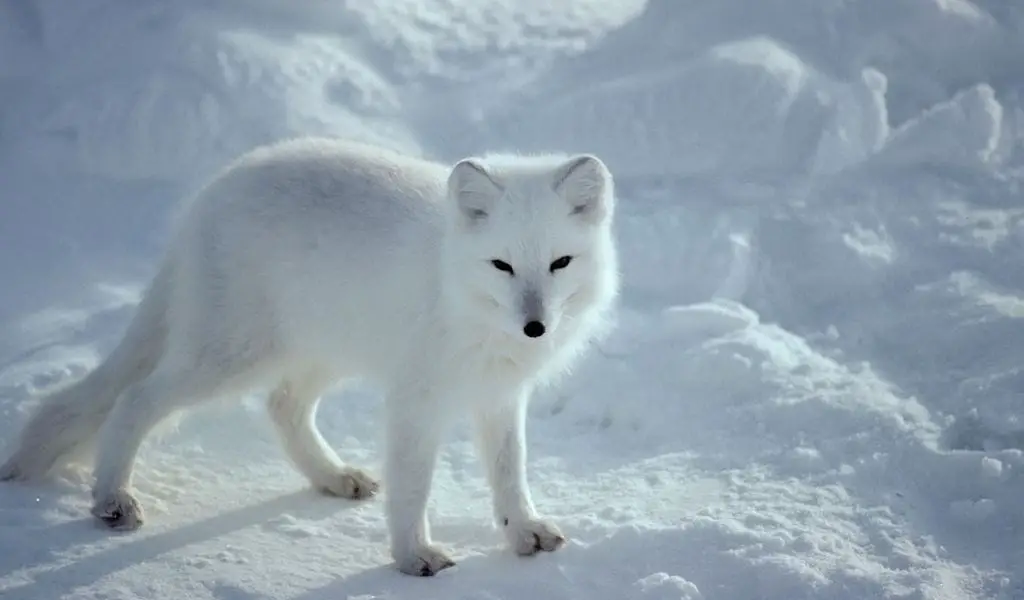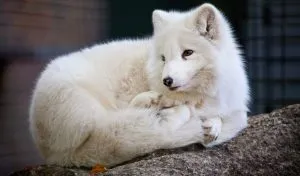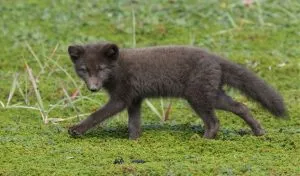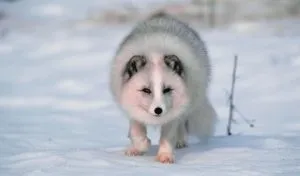Arctic foxes (vulpes lagopus) live in the arctic tundra where they face many threats to their existence, so they have a relatively short lifespan. But just how long do arctic foxes live for?
Arctic foxes have an average life span of 3 years in the wild once they make it to adulthood and have been observed as old as 11 years. However, pup survival rates can be very low due to food scarcity and predators, often with less than half the pups making it to the first breeding season.
Keep reading to find out more about the lifespan of arctic foxes, the main threats to juvenile foxes, and how their lifespan differs in captivity.
How Many Years Do Arctic Foxes Live?
On average, arctic foxes that make it to adulthood live for approximately 3 years although the record for the oldest arctic fox found in the wild is currently 11 years old1 (source: Canids: Foxes, Wolves, Jackals and Dogs, IUCN Canid Specialist Group, C. Sillero-Zubiri, M. Hoffmann, and D. W. Macdonald, 2004).
Note: there are reports of a 16-year-old arctic fox on the Norwegian archipelago of Svalbard although we could not find a reliable source for this.
There are two distinct diets of the arctic fox depending on whether they live inland or in coastal regions.
Arctic foxes that live inland have a diet that mainly consists of rodents such as lemming. However, this diet is unstable with abundant lemmings every 3-4 years and scarcity in-between2 (source: BBC). An arctic fox is only likely to experience one peak lemming year during its lifespan in the wild3 (source: The Biology and Conservation of Wild Canids, D.W. Macdonald and C. Sillero-Zubiri, 2004).
Those that live in coastal regions, such as around the edges of Greenland and Iceland, have a more stable diet of seabirds, fish, and other marine invertebrates so they will see consistent food across their lives.
How Long Do Arctic Fox Pups Live?
Foxes reach sexual maturity at 10 months so they can breed the following breeding season4 (source: Canids: Foxes, Wolves, Jackals and Dogs, C. Sillero-Zubiri, M. Hoffmann, and D.W. Macdonald, 2004). However, they must first stay alive for that long.
Pup mortality is not uncommon mainly due to starvation and predation at a time when they are most vulnerable. Researchers have witnessed entire litters being killed within a day of emerging from their den5 (source: Predation of arctic fox pups by common ravens, C. Chevallier. et al, Polar Biology, Vol 39, Issue 7, 2015).
Survival rates of young arctic foxes vary between regions and depend upon the availability of food and the number of predators. For example, in Sweden, during a year of medium food availability, researchers provided some arctic fox dens with additional food and found that survival rates increased from 42% to 92%6 (source: The effect of summer feeding on juvenile arctic fox survival, M. Tannerfeldt. et al, Journal of Ecography, Vol 17, Issue 1).
Conversely, in Iceland where food is more abundant and there are fewer predators, survival rates by 10 weeks old can be as high as 70%7 (source: The Biology and Conservation of Wild Canids, Macdonald and Claudio Sillero-Zubiri, 2004).
Some reports suggest that when resources are scarce that siblings will kill and eat each other, known as siblicide, however, other studies have debunked this myth8 (source: The effect of summer feeding on juvenile Arctic fox survival – A field experiment, Ecography, Vol 17, Issue 1, March 1994).
What Are the Predators of the Arctic Fox?
Predators of the arctic fox include polar bears, golden eagles, wolves, and red foxes. However, other animals including ravens, snowy owls, and grizzly bears are also known to prey on pups. See our full article to find out more about arctic fox predators.
The red fox is fast becoming their biggest predator. As rising temperatures reduce snowfall and allow woodland to grow further north than usual, red foxes are taking advantage of this to expand their territory into areas previously dominated by arctic foxes9 (source: IUCN).
Red foxes compete for the same resources so they will also hunt arctic foxes to eliminate competition, this is known as intraguild predation.
Studies suggest that arctic foxes cannot den within 8km of a red fox den as this will result in a high likelihood that the red foxes will kill their young10 (source: The Biology and Conservation of Wild Canids, Macdonald and Claudio Sillero-Zubiri, 2004).
How Do Arctic Foxes Survive in the Wild?
Arctic foxes do not migrate, instead, they have become well adapted to living in the arctic tundra with its extreme conditions and predators.
Camouflage is a particularly important survival technique. They change the color of their coat in winter, growing a thick white coat that helps them blend in with the snow. This is useful for evading predators and sneaking up on prey.
They also build large maze-like dens which can have up to 150 entrances and exits to quickly escape when needed11 (source: Canids: Foxes, Wolves, Jackals and Dogs, C. Sillero-Zubiri, M. Hoffmann, and D.W. Macdonald, 2004). Young pups will spend the first few months of their lives in the den where the mother will protect them. They begin weaning after about 4 weeks and are fully weaned by 9 weeks when they will leave the den12 (source: Polar Research, D. Berteaux. et al, Vol 36, Issue 1, Sept 2017).
Related Questions
How Long Do Arctic Foxes Live in Captivity?
In captivity, arctic foxes can live for much longer as they will have better access to food and lower threats from predators. Arctic foxes are known to live up to around 14 years in captivity13 (source: Government of Newfoundland and Labrador, Fisheries, Forestry and Agriculture).
Are Arctic Foxes Endangered?
No, arctic foxes are not endangered as a species. They are rated as ‘least concern’ by the IUCN who is an authority on the matter14 (source: IUCN).
However, there are specific populations of the arctic fox that are critically endangered such as those in Finland and Scandinavia (known as Fennoscandia).
Find out more about why arctic foxes are endangered.





